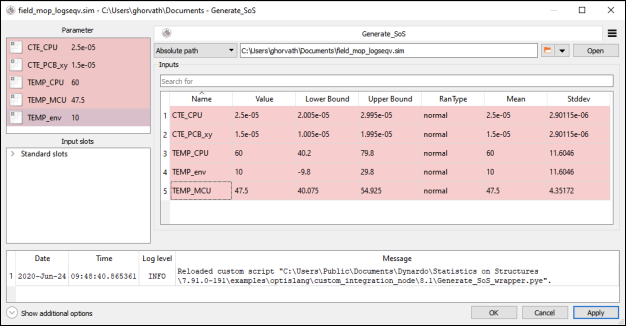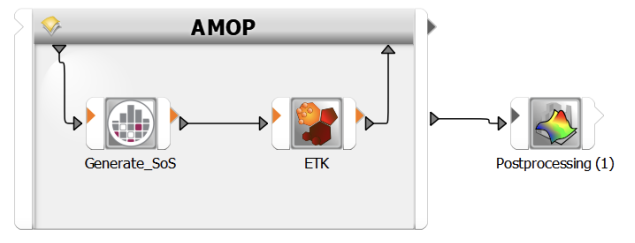You can evaluate field-MOPs or random field models for new sets of input parameters to quickly approximate new field designs. You can export any field quantity, including geometric mesh information, for use in an optiSLang workflow.
This multi-part tutorial shows how to evaluate a field-MOP in optiSLang:
To export a field-MOP for simulation from oSP3D:
Load the oSP3D database file circuit_fmop.sdb in
oSP3D_examples\ansys\circuit.Select > > .
On the Define reference design directory template page, define a reference design path of your choice.
All files added or modified are exported relative to this path.
Click and do the following:
Select Ansys external data CSV for node data as the file type.
Supply a file name of your choice.
Click .
In the Data to export table, select the quantity identifier to export.
Set Design ident to Evaluate Field-MOP.

Click .
On the Define output of simulation data page, set the file to be exported.
Click .
The Export to simulation directory contains all files for evaluating the exported field-MOP and creating a new field design for a set of input parameters. For more information, see the oSP3D script file randomfield_simulate_single_design.ssc .


To use the Generate_SoS node in optiSLang:
In optiSLang, create a Parametric System containing a Generate_oSL3D node.

Edit the Generate_oSL3D node and open the SIM file exported in the previous tutorial.
The scalar input parameters required by the exported field-MOP are recognized.
Add these scalar input parameters to the list of parameters.

Click .
Save and run the project.
The field-MOP is evaluated for default input parameters. Output files are created in the working directory, including the CSV file defined in the previous section and oSP3D log output.

Use the newly created parametric system to generate new field design for further analysis, such as an optimization of some objective function derived from the output field.



